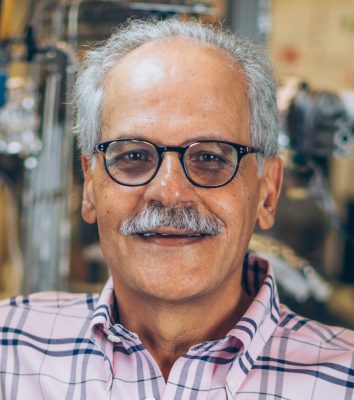
Solar Thermochemical Hydrogen Production Using Redox Active Materials
Date: October 31, 2025; Time: 2:30 PM Location: PWEB 175
Abstract: Hydrogen is a valuable widely used chemical and an essential component in renewable fuels. Steam-methane reforming is currently used to produce low-cost “grey” hydrogen, that can be turned “blue” by capturing and storing CO2 at extra cost. “Green” hydrogen can be produced via electrolysis at much higher cost. Efforts are underway to advance photosynthesis. Thermochemical methods, in which high temperature non-stoichiometric reduction of metal oxides is followed by lower temperature oxidation using steam, have the potential to reduce the cost and operate at high-capacity factor. The same technology can also reduce CO2 and produce syngas; an essential feedstock for SAF and efuels. This however requires innovations in redox materials, reactor design and system’s integration. I will introduce the technology and our recent advancements. Ceria is the gold standard because of its stability, but its reduction temperature is high and oxygen carrying capacity is low. Effort to develop alternatives, mostly pervoskites, are underway. Significant reduction-oxidation temperature swing makes it necessary to recover most of the sensible heat. We have designed systems employing multiple reactors that circulate between the two stages to maximize regenerative heat recovery. Generating deep vacuum for reduction, a costly endeavor, can be accomplished by staged oxygen evacuation and novel thermochemical or electrochemical pumping technologies. System level analysis shows that: separation energy should be minimized using, e.g., membrane systems; and waste heat recovery on the exothermic oxidation side should be used to produce electricity to power auxiliary components. To enable continuous operations with optimally sized units, specially designed indirectly heated reactors should operate while communicating with thermal energy storage units. A novel system invented at MIT integrates these ideas and is currently undergoing derisking and validation.
Biographical Sketch: Ahmed F. Ghoniem is the Ronald C. Crane Professor of Mechanical Engineering, Director of the Center for Energy and Propulsion Research and the Reacting Gas Dynamics Laboratory. He received his B.Sc. and M.Sc. degree from Cairo University, and Ph.D. at the University of California, Berkeley. His research covers computational engineering, turbulence and combustion, multiphase flow, clean energy technologies with focus on oxy-combustion for CO2 capture, renewable energy, biofuel and solar fuel production. He supervised more than 120 graduate students and post-doctoral students; published more than 500 articles in leading journals and conferences; and consulted for the aerospace, automotive and energy industry. He is fellow of the ASME, the APS, and the Combustion Institute. He received several awards including the ASME James Harry Potter Award in Thermodynamics, the AIAA Propellant and Combustion Award, the KAUST Investigator Award, the “Committed to Caring Professor” at MIT and the Combustion Institute Bernard Lewis Gold Medal.